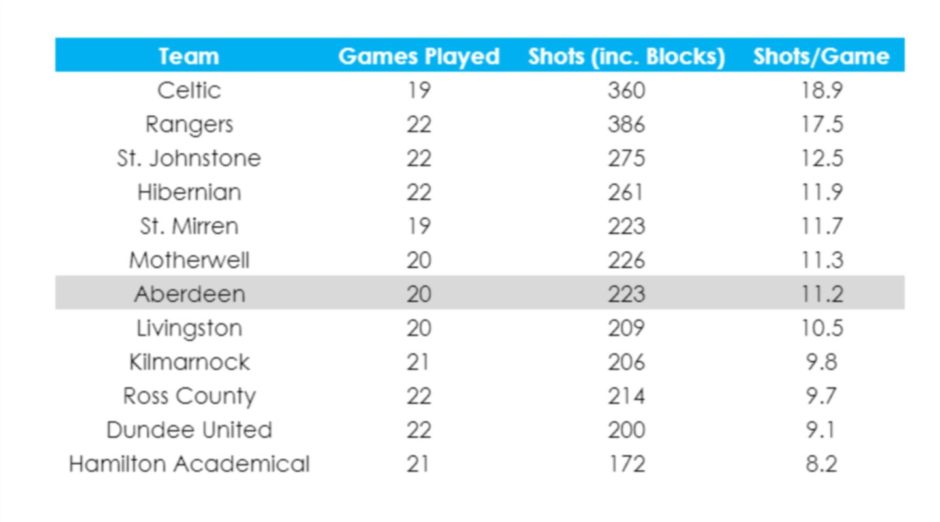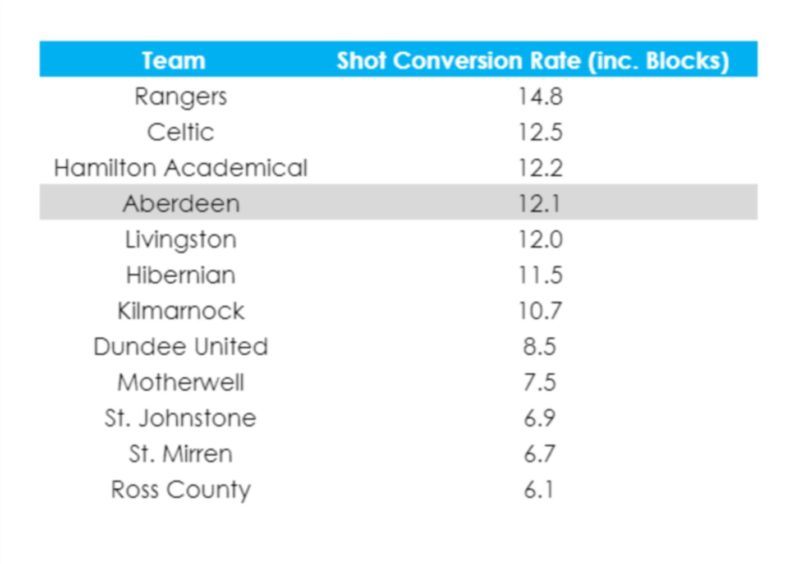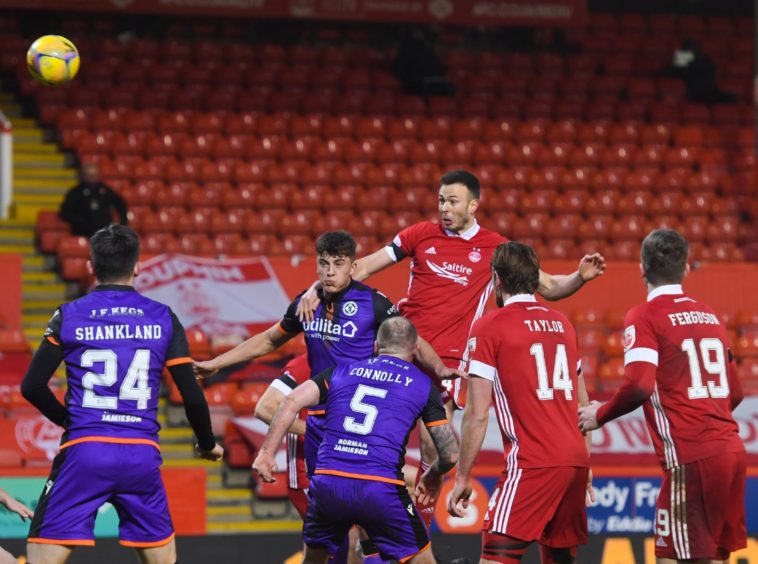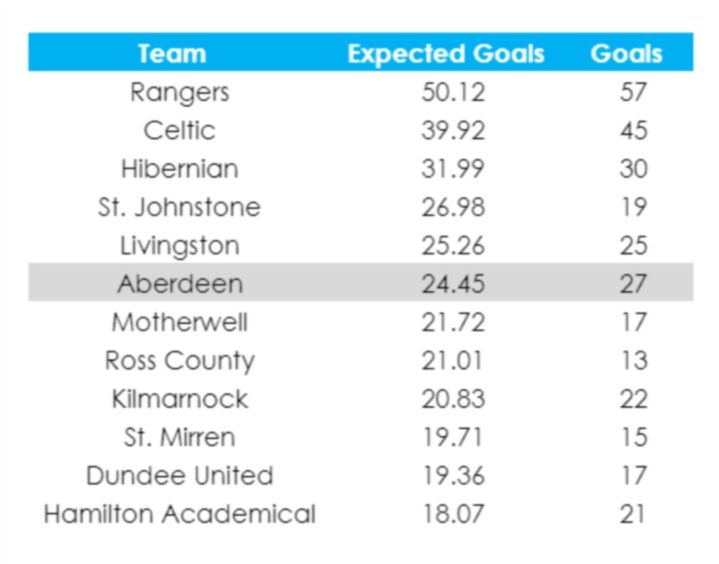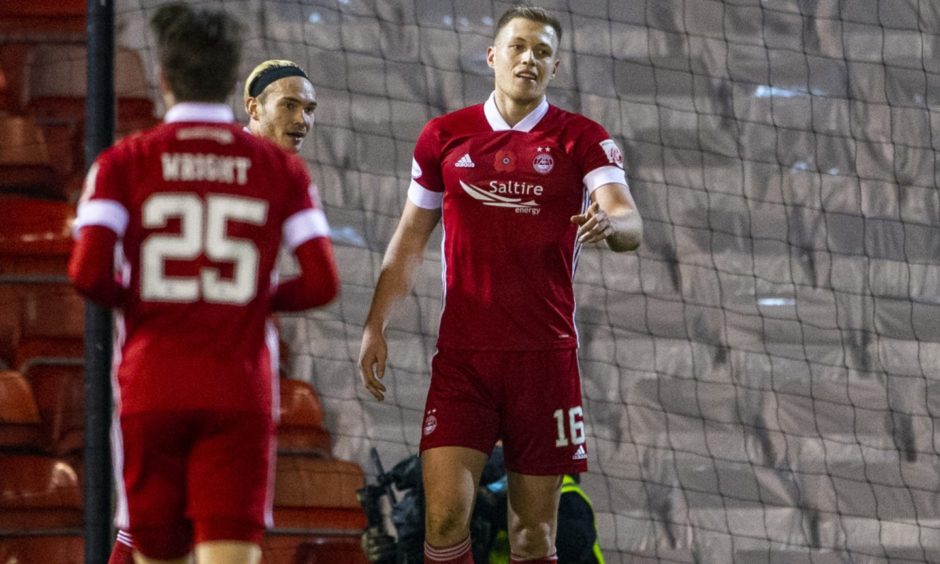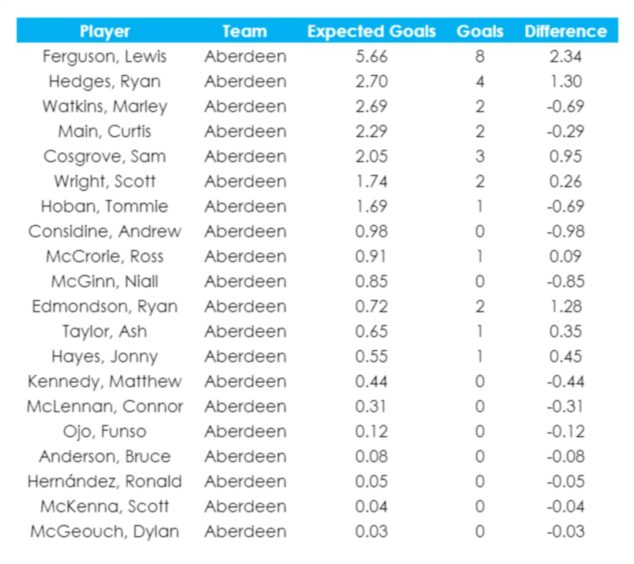Players not getting enough shots away or not enough good chances being created – why aren’t the goals flowing freely for Aberdeen in the Premiership at the moment?
Derek McInnes’ team haven’t scored three goals in a game since October 25 – a 3-3 draw with Celtic at Pittodrie. In three of their games since, against Rangers, Motherwell and Saturday’s clash with Dundee United, they have finished the 90 minutes without scoring.
This has led to the Pittodrie gaffer saying he is looking to sign an attacking game-changer in the January window.
I would like to make one or two changes to the squad if I can to help us with the second half of the season.
“I know where I want to make those changes, especially in the type of game like the one against Dundee United where they could have made a difference.”
Derek McInnes
How many shots are Aberdeen getting away and where do they come from?
Could getting shots away with more frequency improve Aberdeen’s goal tally?
Following the 2-0 win over Kilmarnock on December 20, Derek McInnes said he wanted his players to be less shot-shy. Ryan Hedges’ deflected effort had broken the deadlock after half-time, and his boss said: “We’ve got some good attacking players here and we want them to try to express themselves and get their numbers up. I’d rather the shot doesn’t come off because we are trying to be positive.
“Hedges, in particular, is one we think can get his numbers up. He picked the ball up in a good area, drove at their back lot and got his shot away.”
The vast majority of Aberdeen’s shots so far this season have come from open play (152 of 223). Only 37 have come from corners and 26 from free-kicks, indirectly or directly.
Opta stats show third-placed Aberdeen have averaged 11.2 shots (including blocks) in their 20 Premiership matches so far, leaving them seventh in the rankings, below 11th-placed Motherwell, as well as St Mirren, Hibs, St Johnstone, Rangers and Celtic.
The sides either side of the Reds in the table, Celtic and Hibs, average 18.9 and 11.9 shots a game respectively.
While Aberdeen have scored 27 league goals, both of their rivals have netted more – Hibs have 30 and Celtic 45.
The benefit of taking more shots may be evidenced in the case of Hibs, whose percentage of shots which led to goals (11.5%) is actually slightly lower than the Dons (12.1%).
Aberdeen’s conversion rate is worse than only league leaders Rangers (14.8%), Celtic (12.5%) – who, like Aberdeen, you’d expect to dominate most games and have plenty of shooting opportunities – and perennial relegation-battlers Hamilton (12.2%), who have racked up a surprising 21 goals from an average of 8.2 shots per game.
Getting more shots away is, of course, not a cure-all for Aberdeen’s lower goal return in the last couple of months. But McInnes has publicly encouraged them to have a go earlier, and a much higher shot count would likely lead to a few more goals.
However, as a counterpoint, look at Saturday’s 0-0 draw with Dundee United… 18 shots, the joint highest tally of the campaign, but only three on target and no goals.
It’s common sense players are more likely to shoot from positions where they think they’ve got a good chance of scoring. It’s also more likely they will actually score from good positions.
How many high-quality opportunities to score are Aberdeen creating in games?
Opta’s expected goals metric (xG), which is used to assess the quality of chances and say how many goals a team should’ve scored with the chances they have had, shows Aberdeen are actually performing better than they should be in terms of goals scored this season.
This means they’ve actually done well to wring 27 goals from the positions they’ve got themselves into.
Their expected goals rating to this point is 24.45 – sixth in the Premiership. If Dons fans think 27 isn’t high enough, then the xG suggests things should be worse.
In terms of xG in individual games, Aberdeen had started the season slowly with ratings of 0.15 and 0.29 for the home loss to Rangers and tight away win at St Johnstone in August.
However, the 3-0 home loss to Motherwell (xG of 0.7) and 1-1 draw with St Mirren (xG of 0.91) aside, their creation of high quality chances then improved. They gained a bit of consistency. The high points were an xG of 2.15 in the 2-1 August win over Livingston, 3.26 in December’s 3-0 beating of Ross County in Dingwall and 2.69 for the thrilling 3-3 Pittodrie draw with Celtic.
But, in the nine Premiership matches since the Hoops game in the Granite City, Aberdeen’s highest xG rating has been 1.34 for Boxing Day’s tough-to-watch 2-1 win over St Johnstone.
Five of the games have seen expected goals ratings of less than one, and show – although the Dons could probably do with shooting more – there is a need for clearer chances to shoot being created. This is where the need for an attacking game-changer, to beat a man and open up the route for a killer pass, becomes clear.
It’s common knowledge McInnes could move to bring in former winger Gary Mackay-Steven in the summer, while attacking midfielder Ryan Hedges hasn’t quite hit the heights of the early season, due to having more defensive responsibility when he’s played at right-back and having been without injured partner-in-crime Scott Wright for during the recent period.
Strikers obviously play their part in creating chances by getting into positions, but the expected goals breakdown for the Dons squad at least shows chances aren’t being made and missed.
Curtis Main and Marley Watkins are all in line with their xG ratings, while striker Sam Cosgrove, as well as midfielders Lewis Ferguson and Ryan Hedges, have done better with the opportunities they’ve had than expected.
The stats suggest Aberdeen’s issue at the moment is not creating enough high quality opportunities and resolving this, either with their existing squad or by bringing in more creativity, must be a priority for them to have the best chance of finishing as runners-up in the second half of the Premiership campaign.

